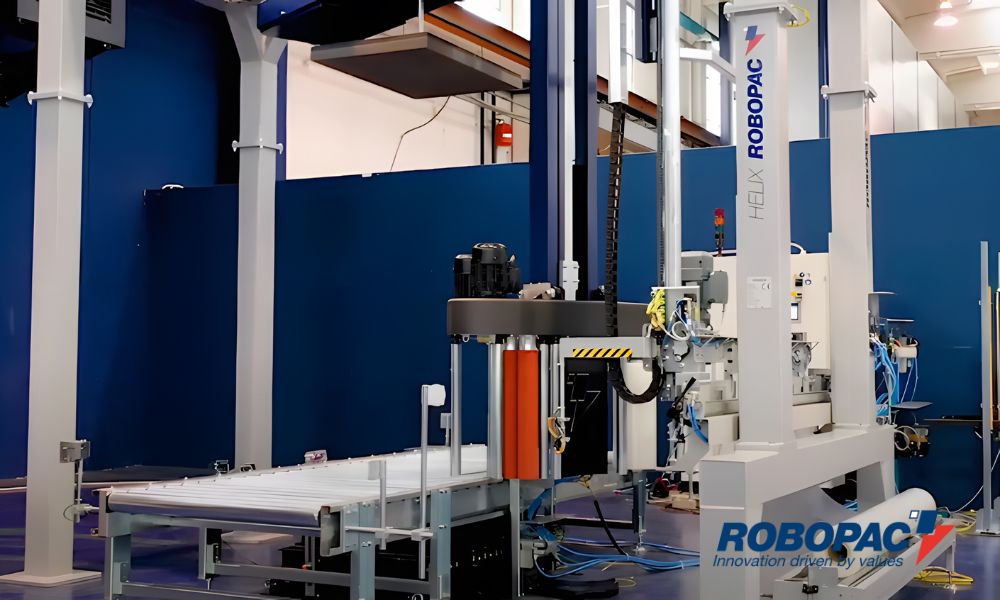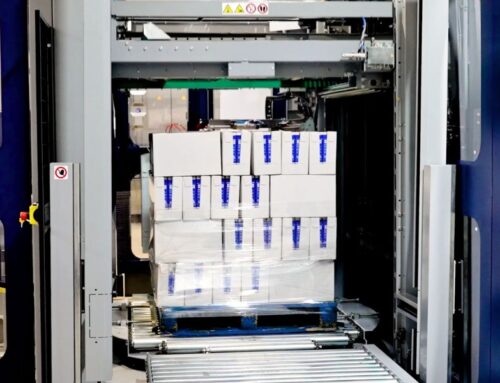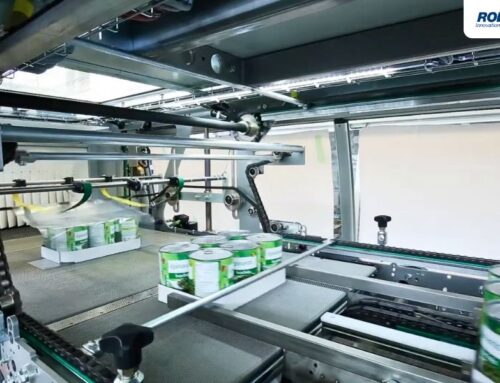Efficient packaging plays a vital role in ensuring that products arrive at their destination safely, without damage, and ready for use or sale. For warehouse managers, logistics professionals, and packaging engineers, finding the right equipment to streamline this process is crucial.
A stretch wrapper is one such piece of equipment that can revolutionize pallet wrapping. By automating or semi-automating the process, stretch wrappers secure and protect pallet loads while improving efficiency and reducing manual labor. If you’re contemplating investing in a stretch wrapper, our guide below will break down the important features to consider when choosing the ideal machine for your application.
Why a Stretch Wrapper Is Worthwhile
Stretch wrappers are machines that wrap pallets securely using stretch film. This process stabilizes loads for transport or storage, safeguarding them against shifting, falling, or damage. Stretch wrappers also reduce material waste, optimize packaging speeds, and enhance worker safety and better manual pallet wrapping.
For industries that handle high volumes or rely on operational precision, stretch wrappers streamline workflows and deliver consistent results. The benefits of stretch wrappers are clear—faster wrapping cycles, lower labor requirements, and less risk of load instability make them a must-have in modern facilities. However, not all stretch wrappers are equal.
Factors for Selecting the Ideal Stretch Wrapper
When choosing a stretch wrapper, there are many factors to consider to find the ideal one for your industry and application. We’ll break down what you need to research, from wrapping volume to tension control, to select the best stretch wrapper for you.
Pallet Size and Weight Capacity
First, you’ll want to do some self-assessment of your stretch-wrapping needs. The size and weight of the pallets you regularly handle will largely determine the type of stretch wrapper you need.
Some machines are best for standard pallet sizes, while others can accommodate irregularly shaped or oversized loads. Also, consider the weight capacity of the wrapper. Machines for heavier loads reduce the risk of system strain, ensuring that the equipment operates efficiently over its lifetime.
Wrapping Volume and Production Speed
The amount of wrapping your facility requires each day will help determine whether a manual, semi-automatic, or fully automatic stretch wrapper is appropriate. For low-volume needs, a semi-automatic option is typically sufficient. However, facilities with high production rates should consider fully automatic machines, as they minimize operator intervention and handle large numbers of pallets swiftly and reliably.
Pre-Stretch Film Capabilities
Pre-stretch capabilities are fundamental for optimizing film usage and reducing costs over time. A pre-stretch mechanism elongates the stretch film before applying it to the load, enabling it to cover more surface area with less material. This feature saves money and ensures enhanced load stability by evenly distributing the film’s tension.
Level of Automation and Operator Involvement
The level of automation depends on your facility’s specific needs. Manual stretch wrappers are cost-effective but require significant operator input, making them ideal for low-volume operations. Semi-automatic machines strike a balance between cost and efficiency, while fully automatic wrapping machines are best for high-volume environments and require minimal human intervention.
Tension Control and Film Application
Proper tension control ensures stable and secure loads. Too much tension can damage the products being wrapped, while too little may result in unstable pallets. Advanced stretch wrappers provide adjustable tension settings to accommodate different load types and ensure that pallet stabilization is always optimal.
Floor Space Requirements
Stretch wrappers come in all shapes and sizes, and the available space in your facility can be a limiting factor when choosing equipment. It’s important to assess your facility’s layout and choose a stretch wrapper that fits your spatial requirements without disrupting workflows. Compact machines or models with a rotating arm may be suitable for facilities with limited space.
Environmental Factors
The environment your stretch wrapper operates in will influence your choice. For example, facilities with high humidity or fluctuating temperatures may require a machine that can withstand such conditions without compromising performance. Managers should also consider dust and debris levels in the area, as they can affect machine components over time.
User-Friendly Controls
Ease of use is another key factor. Machines with an intuitive control panel minimize the learning curve for operators and reduce the likelihood of errors. Look for touchscreens, programmable settings, and clear step-by-step instructions to make the operation as efficient as possible.
Cost vs. Long-Term Savings
While budget considerations are important, buyers should also evaluate not just the upfront cost of the machine but the long-term savings it can bring. A higher-priced semi-automatic or automatic wrapper with pre-stretch capabilities, for instance, could save thousands of dollars annually in film and labor costs, making it a more cost-effective choice in the long run.
Types of Stretch Wrappers
We’ve gone into many factors to help you decide which stretch wrapper is best for your application; now, let’s go more in-depth into the types of stretch wrappers. The main categories of wrapping machines are manual, semi-automatic, and automatic.
Manual Stretch Wrappers
Manual stretch wrappers are the most basic and cost-effective option. They require operators to apply the film manually, making them suitable for facilities with low pallet-wrapping volumes. While these machines are affordable, they demand much physical effort and are less time-efficient compared to automated options.
Semi-Automatic Stretch Wrappers
Semi-automatic stretch wrappers require some operator involvement to place the pallet on the turntable and start the wrapping process, but the machine handles the wrapping itself. These machines are ideal for medium-volume operations that value both speed and cost efficiency. They offer adjustable wrapping speeds and can include features like pre-stretch film capabilities.
Fully Automatic Stretch Wrappers
Fully automatic stretch wrappers are ideal for high-volume warehouses or production lines. These machines wrap pallets with minimal to no operator input, making them suitable for continuous operation. Fully automatic models integrate seamlessly with conveyor systems to further enhance efficiency, reducing downtime and increasing throughput.
Additional Considerations
There are a few more things that buyers should consider when browsing the many stretch wrapping machine models. Safety features, maintenance requirements, and customer support can be tiebreakers when deciding between two evenly matched stretch wrappers.
Safety Features
Operating heavy machinery always comes with risks, which is why safety features are paramount. Look for machines that come with emergency stop buttons, automatic film cut-off features, and sensors to detect obstacles.
Maintenance Requirements
Choose a stretch wrapper with minimal maintenance needs or one that includes a comprehensive service plan. Machines with high-quality components and reliable construction will ensure long-term operational efficiency with reduced downtime.
Warranty and Support
A strong warranty and excellent customer support from the manufacturer can save you considerable time and money when issues arise. Ensure that the vendor offers technical support and maintenance services to keep your machine running smoothly.
Streamline Your Packaging With the Right Stretch Wrapper
Selecting the perfect stretch wrapper for your facility involves understanding your specific needs, from load size and automation level to environmental conditions and budgetary considerations. With a thoughtful and informed approach, you’ll find a machine that meets your current requirements and can grow with your business.
If you’re ready to experience streamlined packaging like never before, consider Robopac USA’s innovative stretch wrapper solutions. Contact us today to explore our range of products that can meet the demands of modern logistics.








